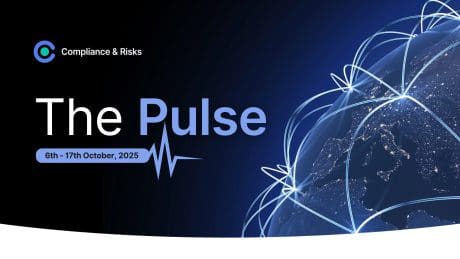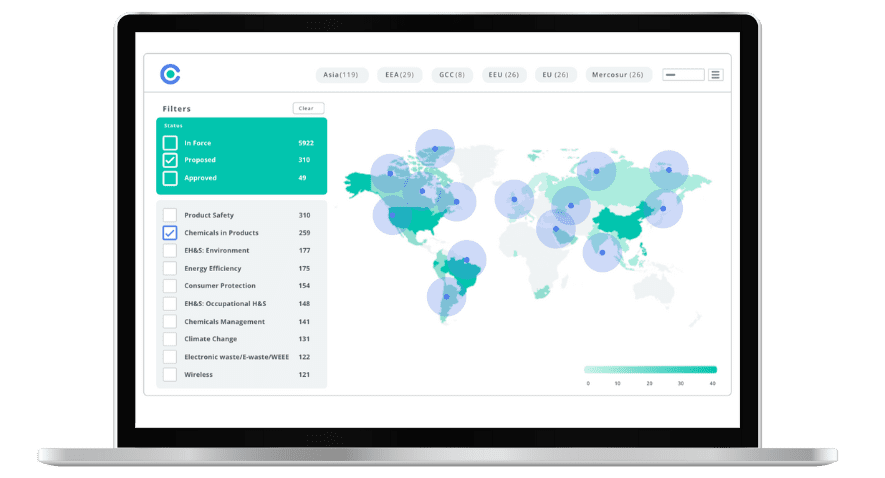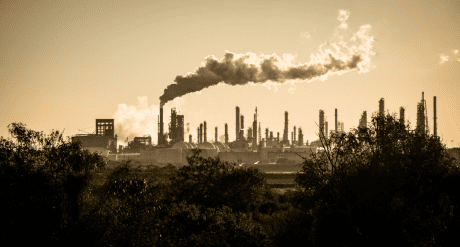
Omnibus Amendment to the CBAM Regulation: What to Expect in 2026 and Beyond

This blog was originally posted on 11th November, 2025. Further regulatory developments may have occurred after publication. To keep up-to-date with the latest compliance news, sign up to our newsletter.
AUTHORED BY CÉLIA LE LIÈVRE, SENIOR REGULATORY COMPLIANCE SPECIALIST, COMPLIANCE & RISKS
On 17 October 2025, the Omnibus amendment to the CBAM Regulation was published in the EU Official Journal as Regulation (EU) 2025/2083. Originally proposed on 26 February 2025, the amendment aims to simplify and streamline the operation of the Carbon Border Adjustment Mechanism (CBAM) as part of the Omnibus simplification packages initiated in February 2025.
In this blog, I outline the context behind this amendment and highlight the key changes introduced to the CBAM. I also discuss the implications of the Omnibus amendment for importers in the definitive CBAM period.
Background and Context: CBAM and the Omnibus Package
The Carbon Border Adjustment Mechanism (CBAM) is an environmental policy instrument aimed at supporting the European Union’s goal of achieving climate neutrality by 2050. Introduced under Regulation (EU) 2023/956 and elaborated through implementing acts, the CBAM mirrors the functioning of the EU Emissions Trading System (ETS). It obliges importers to buy CBAM certificates to offset the carbon emissions embedded in goods imported from non-EU countries.
Given the unstable economic and geopolitical context, the EU launched an ambitious Omnibus sustainability simplification package in February 2025. The initiative aims to reinforce competitiveness while reducing administrative and reporting burdens on companies.
A central component of Omnibus is the proposal to amend several key EU sustainability laws, including the Corporate Sustainability Due Diligence Directive (CS3D) and the Corporate Sustainability Reporting Directive (CSRD). While these legislative proposals are still under discussion within the EU institutions, the simplification package has already led to the adoption of Regulation (EU) 2023/956 amending the CBAM Regulation. This Regulation entered into force on 20 October 2025 and made several changes to the CBAM.
Introduction of a New Single-mass Exemption Threshold
Regulation (EU) 2025/2083 introduces a single mass-based exemption threshold, replacing the previous value-based threshold of €150 per consignment. In practical terms, this means that importers whose total imports do not exceed 50 tonnes within a given calendar year will be exempt from CBAM obligations for that year. This exemption covers both the obligation to submit a declaration on embedded emissions and the requirement to purchase and surrender certificates. Exempted importers will nonetheless be required to self-identify as occasional CBAM importers in their customs declarations. This single-mass based threshold would apply cumulatively across all goods falling within the sectors of iron and steel, aluminium, fertilisers, and cement. Imports of electricity and hydrogen are explicitly excluded from the new exemption threshold of 50 tonnes per importer/per year.
Importers who expect their shipments to exceed the single mass-based threshold must apply for the status of authorised CBAM declarant before reaching the limit. However, Regulation 2025/2083 introduces a transitional period allowing importers who submit their application by 31 March 2026 to continue importing CBAM goods throughout 2026 (and until the national authority issues its decision on the application), even if the threshold is exceeded.
Postponement of CBAM Declaration Deadline
The deadline for submitting annual CBAM declaration and for surrendering CBAM certificates during the definitive period has been extended to 30 September of the year following the import of CBAM goods. This replaces the 31 August deadline that was proposed in the draft approved by the European Parliament on 10 September 2025. Starting in 2027 (for the 2026 reporting year), authorised CBAM declarants will be required to submit their declarations through the CBAM Registry and surrender the corresponding number of certificates reflecting the embedded emissions of goods imported during the previous calendar year.
Sales and Price of CBAM Certificates
The amendment also defers the obligation to sell CBAM certificates until the first quarter of 2027. The sale of CBAM certificates by Member States, covering embedded emissions in goods imported during 2026, through a centralised common platform will begin on 1 February 2027. Certificates purchased for 2026 imports will be priced based on the EU ETS quarterly average allowance prices. From 2027 onwards, the price of CBAM certificates will be calculated depending on the weekly average auction price of EU ETS allowances (expressed in €/tonnes of CO2 equivalents emitted).
Reduction of the Ratio of CBAM Certificates
Another key aspect of the Omnibus amendment is the reduction of the ratio of embedded emissions that purchased CBAM certificates shall correspond to at the end of each quarter. From 2027, importers must ensure that, at the end of each quarter, the number of certificates on their CBAM registry account corresponds to at least 50 % (instead of 80%) of the embedded emissions in all goods they have imported since the beginning of the calendar year.
Changes in Default Value and Calculation of Embedded Emissions
Regulation (EU) 2025/2083 makes several changes concerning the calculation of embedded emissions. First, in order to align with the EU ETS, the amendment excludes from the calculation of embedded emissions, finishing processes involved in the production of specific steel and aluminium goods. What is more, it authorises importers to calculate embedded emissions using either an actual value (verified by an accredited verifier) or a default value to be established by the EU Commission. Default values may be relied upon even when actual emission values are available.
Default values shall be set at the average emission intensity of each exporting country and for each CBAM goods, increased by a proportionately designed mark-up. This mark-up shall be determined in separate implementing acts. Alternatively, when reliable data for the exporting country cannot be applied for a specific type of goods, the default values shall be set at the level of the average emission intensity of the 10 exporting countries with the highest emission intensities for which reliable data is available for this type of goods.
Adjustment of CBAM Certificates to Reflect Carbon Price Paid in Third Countries
Authorized CBAM declarants will be allowed to claim a reduction in the number of certificates to be surrendered in their declarations to reflect the carbon price incurred in a third country.
Designation of Third Party to Submit CBAM Declaration
Additional flexibilities have been introduced to enable authorised CBAM declarants to delegate the submission of CBAM declarations to a third party. However, the authorised declarant will remain fully responsible for ensuring the accuracy and timely submission of the declaration.
Status of Authorised CBAM Declarants
Note that the status of authorised CBAM declarant will still become mandatory from 1 January 2026. However, as discussed above, Regulation 2025/2083 introduces a grace period to authorise importers who apply by 31 March 2026 to continue importing CBAM goods throughout 2026, even if they exceed the single mass-based threshold of 50 tonnes per importer.
Implications for the Definitive Phase of CBAM
CBAM is currently in its transitional phase, running from 1 October 2023 to 31 December 2025. During this period, importers are required to quarterly report their embedded emissions but are not yet obliged to purchase certificates to offset their emissions. The latest quarterly report covering the period from October to December 2025 is due by 31 January 2026. The financial obligations of the CBAM will then apply from 1 January 2026 which sets the beginning of the definitive period.
Although the definitive CBAM period is scheduled to commence on 1 January 2026, in practice it will effectively begin on 1 February 2027, when Member States must start selling CBAM certificates via a centralised EU platform (Article 1(16) of amending Regulation 2025/2083). Importers will thus be able to purchase certificates from February 2027 to cover CBAM goods imported in 2026. The commencement of CBAM obligations relating to the declaration of embedded emissions for these goods has been deferred until September 2027.
Preparing for CBAM: Key Steps for Importers Post-Omnibus
Importers of CBAM goods should immediately begin assessing whether they fall within the 50-tonne annual exemption threshold. Those expecting their imports to exceed this limit must apply early for authorised CBAM declarant status. Additionally, importers should promptly implement robust processes to collect emissions data from their suppliers, ensure that emissions based on actual values undergo verification by an accredited verifier and prepare for the mandatory purchase of CBAM certificates starting in 2027.
What’s Next?
The Omnibus amendment is not the end of the journey. More legislative amendments are planned for 2025, including targeted changes to extend the scope of CBAM to downstream products and to refine methodologies for calculating embedded emissions. These will also address the adjustment of CBAM certificates to reflect the EU ETS free allocation in the definitive period.
Expansion of CBAM to “Downstream Products”
The EU Commission plans to expand the scope of the CBAM to include downstream products within the value chain of CBAM goods to prevent carbon leakage further down the value chain. As currently designed, CBAM covers cement, iron and steel, aluminium, fertilisers, electricity, hydrogen and certain downstream products listed in Annex I of the CBAM Regulation, such as tubes, pipes, screws, bolts, and bridge sections.
The EU Commission plans to extend the scope of CBAM to include additional finished downstream products primarily made of steel or aluminium. These downstream products are items manufactured using the materials already covered by CBAM, such as processed steel components or fabricated aluminium goods. While the type of downstream products to be added has not been unveiled, their selection would rely on criteria similar to those used to define the initial CBAM scope, namely:
- The risk of carbon leakage (which depends on the tradability and the carbon cost);
- The relevance of embedded emissions; and
- The technical feasibility.
The revised scope is expected to help tackle circumvention practices by discouraging manufacturers from shifting production to jurisdictions with weaker climate policies or lower carbon costs for basic materials. A legislative proposal on the revised scope is expected in Q4 2025.
Work in Progress: Shaping Emission Methodology, Free Allocation Adjustment and Carbon Price Paid in Third Countries
In August 2025, the EU commission launched three public consultations to inform the preparation of future implementing acts defining:
- The methodology for calculating direct and indirect embedded emissions,
- The rules for adjusting the number of CBAM certificates to account for carbon prices paid in third countries, and
- The rules for adjusting the certificates to reflect the free allocation of ETS allowances.
The Commission is currently reviewing the feedback received from stakeholders. The final implementing acts are expected to be adopted before CBAM becomes fully applicable on 1 January 2026.
Experience the Future of ESG Compliance
The Compliance & Risks Sustainability Platform is available now with a 30-day free trial. Experience firsthand how AI-driven, human-verified intelligence transforms regulatory complexity into strategic clarity.
👉 Start your free trial today and see how your team can lead the future of ESG compliance.
The future of compliance is predictive, verifiable, and strategic. The only question is: Will you be leading it, or catching up to it?

Simplify Corporate Sustainability Compliance
Six months of research, done in 60 seconds. Cut through ESG chaos and act with clarity. Try C&R Sustainability Free.



